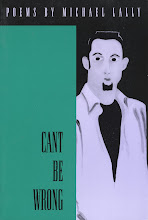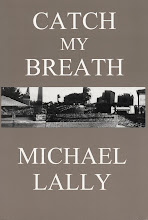My old friend Hubert Selby Jr. used to always remind me to “remember the infinite possibilities of life.” I was thinking of that last Thursday evening when I attended the openings of two art shows in Chelsea, as I passed galleries where other shows were going on and compared in my mind the two shows I was interested in, I thought of how great it is in these times that we can be exposed to the infinite possibilities of art.
I also thought of how much I hate the partisanship that this variety of approaches seems to produce, various "schools” of painting or poetry or musical styles etc. vying for attention and rewards by putting down rival schools of etc. And me, often being put down for digging almost all of it. But I don’t think I’m the only one, nor that it’s naïve, to dig this variety we are privileged to enjoy.
I mean through the internet and other media conduits we can experience and make use of just about any period in history and its styles, not just in the arts but in its politics and daily life, its spirit and ambitions, etc. I love variety, (obviously, take a look at my own creative output) and the Walton Ford and Tom Burckhardt shows exemplify why.
They are both artists who employ historic approaches to “painting” but in new and original ways
I have “painting” in quotes because actually Ford's art is mostly watercolors on paper and Burckhardt is also a kind of sculptor, though his sculptures involve, or incorporate, or essentially are, paintings. I mean first and foremost, he’s a painter. Sort of. The easier designation is they’re both “artists.”
But that too requires at times quotes because the English language is so difficult. We use “artist” to describe rappers and “painters” was often used to describe family members and others who worked in my father’s home maintenance business primarily when houses needed painting.
But what Walton Ford does is exactly what we used to mostly mean by “artist” and “painter,” that is to say, he paints [watercolors, gouache, ink etc.] “pictures” on canvases [actually canvas size paper]. Not abstractions (like Burckhardt, though Burckhardt’s abstractions initially seem more ironic—and therefore contemporary—than heroic like the original abstract art did) or concepts (as in “conceptual art,” though in fact Ford’s paintings are of “concepts” in the broader and actually more specific original sense of the word), etc.
To keep it as simple as I can, Ford paints figures and scenes on canvas [watercolors gouache ink etc. on paper]. In his latest show the canvases are very large, what is often called “heroic.” (What abstract painters in the 1940s and ‘50s did was called “heroic” for many reasons, including the originality of their approaches and the psychological depths they often had to probe to create, but just as often “heroic” was used because of the large size of some of their paintings.) As in the one used on the invitation to the show, a painting several feet high and even more wide, filling almost one whole wall of the gallery, in which the rhinoceros is probably life size.
The central figure in a typical Ford painting is an animal engaged in an act that seems as clinical and objectively rendered as Audubon’s paintings of birds or Henry Carter’s illustrations for Gray’s Anatomy.
But when you look closer, there is always something unusual, or unexpected. Sometimes it’s the inclusion of an historic reality that was left out of these kinds of "paintings" throughout history, like the prize bull's enormous testicles, or the black bears burned to death hanging from a tree, while in the corner of the painting is a tiny scene in the distance of human figures, who have treed several live black bears, setting fire to the tree to burn these bears alive too.
As in these examples from the current show, the reality Ford’s realistic renderings seem to celebrate, or at least illustrate, is often cruel and/or sexual, either overtly or indirectly. So his "paintings" engage the viewer in more ways than one.
Foremost among the several ways they catch the eye and hold it is simply as an expression of incredible artistic control. The figures are always perfectly rendered, down to the tiniest detail, and yet all placed on the "canvas" as on a page in a 19th-century illustrated encyclopedia.
But not your typical 19th-Century, or for that matter 20th- or 21st-Century, illustrations, but rather illustrations of rarely, if at all, officially illustrated animal realities. Which is another way Ford’s "paintings" impress, as historic truths revealed, ones we may not have known before or avoided, the knowledge of the natural world that has been kept hidden or ignored for centuries, or longer.
There is also the ambivalence of how ironic and/or didactic are these paintings meant to be? So see for yourself if you're anywhere near Manhattan before the show ends on July 3rd (at Paul Kasmin Gallery at 293 Tenth Avenue, on the Southwest corner of 27th Street, and here's a link to it, since I couldn't manage to upload the image from the invitation).
Tom Burckhardt’s show is an entirely different matter. I’ve known him since he was a teenager on the St. Mark’s Poetry Project scene, mostly through his father, the photographer (and painter) Rudy Burckhardt.
But I’ve been a fan of Tom’s art since I first saw it, and even more so a show he had in 2006 that grew out of his frustration over a lack of inspiration or new ideas until he got one to recreate an artist’s studio only using cardboard and black paint (I assume paint, but it was handled with such a variety of techniques that sometimes it seemed more like tar and at other times more like ink).
The faux studio was an environment you entered and experienced almost as you might the real thing, except everything was made of cardboard, down to the minutest detail, including used paint rags and brushes, cans and a potbelly stove, a messy single bed, bookshelves with books, a cluttered desk and the bulletin board hanging over it, with cardboard and black paint replicas of various postcards “tacked” (the “tacks” were painted) to it, including familiar shots of musical icons like Billy Holliday or reprints of paintings by various artists, including one by Philip Guston which I bought, figuring it’s as close as I’ll get to owning a real Guston or one of the vastly more expensive Tom Burckhardt paintings (the cardboard artist’s studio was sold piecemeal and the postcards were some of the cheapest things in it).
His new show (which I also couldn’t manage reproducing an image from, so here’s a link to the gallery) is called “slump” and consists of his past kinds of almost cartoony “abstract” paintings, only their frames have been designed to seemingly curl at the bottom (there’s actually just two bends towards the bottoms of the frames to create the illusion of a curve) and instead of hanging from the wall are propped up on paint cans and shipping crates etc. (which are meant to be part of the art) and lean against the walls.
It’s both funny and sad, as if the paintings were either very tired or a little depressed.
Burckhardt’s art often includes what appears to be ironic commenting on the art of “art” or of “the artist,” but his nature is un-ironic and therefore I suspect, as in most of the “products” of the creative imaginations I like, is actually meant to express a sincere attempt to engage the creative process and its inspirations, obstacles, rewards and pitfalls.
In the show he did after the cardboard studio one, he exhibited ink drawings meant to evoke classics of the genre, including Asian screen paintings, only a digital reproduction of himself before a canvas on an easel was inserted into them, making it self referential but also humorous and expressive of the challenge of artistic creation in the post-modern context.
You can find lots of images from Burckhardt’s various art shows, besides the one I have above, as well as images of Ford’s art (which is sometimes reproduced in The New Yorker, where some of you have probably already seen it). Check them out, let me know what you think.
(For full disclosure, I know Walton Ford too. He and I met a few years ago at a party at which, during a no-small-talk introductory conversation (I just don’t do small talk very well, a hindrance to the “networking” aspects of a “career”), we discovered we both knew “Indian Larry,” the motorcycle designer who died not long ago. Ford worked with Larry before either of them became famous (Larry mostly through his TV show, as an artist in his own right, only his canvas was motorcycles which he custom built or rebuilt into functional works of art). They worked together in a Brooklyn pipe factory. I knew Larry through our mutual friend Bobby Miller, when Larry was living in the city with Bobby and needed a place to store his motorcycle while he worked on rebuilding it. I lived in an illegal loft in “Tribeca” (a real estate term I hated, so usually called the neighborhood what it was known as before that horrible label, Washington Market) with my two older children when they were young and lots of space for only two hundred a month (oh the seventies in the city) so Larry stored his bike at my loft and came over most days to spend hours working on it while I rattled the keys in my old typewriter or went off on auditions in my new role, then, as a movie actor. But, as they say, that’s another story.)
Subscribe to:
Post Comments (Atom)
















1 comment:
Interesting to read about these two guys after having just read the obituary of Robert Raushenberg, one of the main guys who blew open the doors of what is "allowable" for artists to put on a canvas, or to put anywhere.
Post a Comment